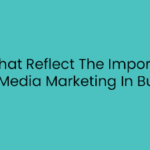
6 Effective Ways That Help in Reducing Bounce Rate
When a visitor comes to your website and quickly leaves, it’s called a “bounce.” A high bounce rate indicates that website visitors are not finding what they are looking for on your site. This could be because of several factors, including poor design, slow loading speed, or unengaging content.
But fortunately, there are many things you can do to reduce your website’s bounce rate. Here, we have mapped out the 6 effective ways to help you achieve your goal. By following these tips, you can reduce your website’s bounce rate and keep visitors on your site longer.
Table of Contents
What is Bounce Rate & How Can it Damage your Business?
Bounce rate is one of the most important website metrics to track. It measures how often visitors to your site leave after only viewing one page. A high bounce rate is generally a sign that your website is not providing the information or value that users are looking for. It can further damage your business by deterring potential customers from returning to your site.
A high bounce rate can affect your business in plenty of ways, such as-
- First, it indicates that your website is not providing what visitors want. This could mean that your site is irrelevant to their needs or is not user-friendly.
- Second, a high bounce rate can impact your business’s search engine rankings. Search engines like Google use a variety of factors to rank websites, and one of those factors is time on site. If visitors to your site quickly leave, it signals to Google that your site is not worth ranking high.
- Finally, a high bounce rate can negatively impact your conversion rates. If people are coming to your site but not sticking around, they’re less likely to take the actions you want them to take.
The 6 Practical and Proven Ways to Reduce the Bounce Rate
Here’s a quick rundown of the 6 effective ways to lower the bounce rate while increasing your site’s performance and conversions. Read more to get started-
1. Improve your Website’s Design
Poor website design is one of the major underlying causes of a high bounce rate. Hence, Ensure your website has a clean and professional design, so visitors can easily navigate your site and find the information they are looking for.
Remember that if visitors can’t find their way around your site, they’ll quickly become frustrated and leave. So, it’s vital to keep your navigation simple and intuitive and make sure all of your links work.
2. Pay Attention to the Page Loading Speed
The page loading speed is integral to the overall site’s ranking and bounce rate; hence, you must pay attention to it. If your website takes too long to load, visitors will likely leave before it even finishes loading.
Ensure your site is optimized for speed, and keep an eye on your loading times. Use tools like Google PageSpeed Insights to test your website’s loading speed and make the necessary improvements.
3. Make sure your content is well-written
Compelling and well-written content is one of the most critical factors in reducing your website’s bounce rate. If visitors come to your site and find dry, boring content, they’re likely to click away quickly.
Hence, ensure all of your site’s content is interesting and informative so that visitors will want to stick around and explore more of what you offer. Do not forget to use appropriate keywords to optimize the content for search engine optimization. But insert them correctly to avoid keyword stuffing. Also, keep your content updated and aligned with the latest guidelines.
4. Optimize your Website for Mobile Devices
Long gone are the days when people used to browse the internet on PCs only, as more and more people are now using mobile devices to access their favorite online content. This trend has big implications for businesses that want to ensure that their website is being seen by as many people as possible. After all, what good is a website if no one is visiting it?
Therefore, it is vital to ensure your website is optimized for mobile devices so that visitors have a good experience when they visit your site from their phones or tablets.
5. Make your site’s content easy to read
If you want people to stick around on your website, make sure that your content is easy to read. One common issue that makes content difficult to read is the wall of text. This is when a text block goes on for too long without any breaks. It can be daunting for readers, leading them to bounce off the page.
To avoid this, consider using short paragraphs, clear sentence structure, and simple words. Breaking up your content with headlines, lists, and images can also help make it more readable.
6. Target Relevant Audience
Last but not least is to target the appropriate audience, as it not only reduces the bounce rate but also increases leads and conversions. You need to identify the core target audience of the site and create a niche of content around them, so they can engage with whatever you are offering.
Also, targetting should never be too broad; otherwise, it also attracts those who are not looking for what your site has to offer, thus increasing the bounce rate.
Read Also: Why Digital Marketing is the Future of Business?
Summing Up
That’s all about it. It is essential for any website to have a low bounce rate, as the higher the bounce rate, the lower your rankings, and conversions. So, it is advised to follow all the tips mentioned above and turn your bounce rate into opportunities to power your performance.








